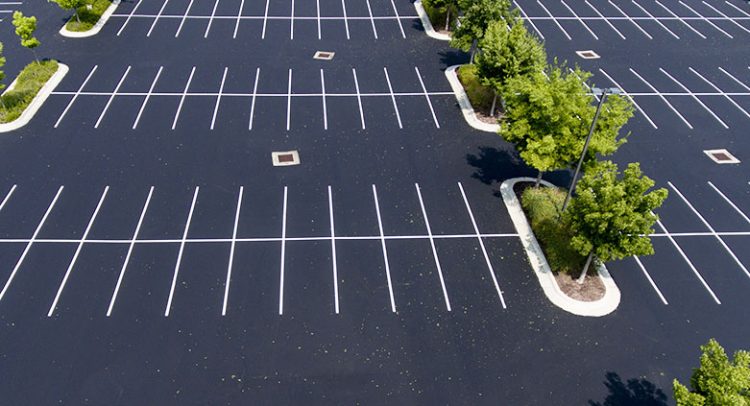Parking lots play a significant role in providing vehicle access and convenience at various establishments. However, due to constant exposure to heavy traffic, weather elements, and environmental factors, parking lots can deteriorate over time. Professional parking lot repair contractors have the expertise and knowledge to perform effective repairs and restore the functionality and safety of these areas.
H2- Parking Lot Repair Contractors Taking Important Steps
Parking lot repair is a multi-faceted process that requires careful assessment, planning, and execution. Experienced contractors systematically address various issues, such as cracks, potholes, drainage problems, and faded markings. By developing a comprehensive repair plan, utilizing appropriate repair techniques, and adhering to safety standards, contractors can restore the parking lot’s functionality, safety, and aesthetics.
Site Assessment and Inspection
The initial step for parking lot repair is a thorough site assessment and inspection. Contractors carefully examine the parking lot to identify cracks, potholes, faded markings, drainage problems, and surface erosion. This assessment is the foundation for developing a comprehensive repair plan tailored to the parking lot’s needs.
Identifying the Scope of Repairs
Once the site inspection is complete, parking lot repair company employees evaluate the required repair scope. They categorize the issues based on severity and prioritize critical repairs to address safety concerns and prevent further deterioration. This step helps contractors plan their resources and materials effectively.
The Parking Lot Repair Company Develop a Plan
Contractors create a detailed repair plan based on the site assessment and scope of repairs. The plan outlines specific repair techniques, materials needed, estimated timelines, and the overall budget for the project. A well-defined repair plan ensures that the project progresses smoothly and efficiently.
Crack and Pothole Repair
Cracks and potholes are common issues in parking lots, and addressing them is essential to maintain the pavement’s structural integrity. An asphalt contractor will first clear debris, vegetation, garbage, and damaged pieces. Then they use various methods for crack repair, such as crack sealing or filling, to prevent water penetration and further damage. Larger potholes may require patching with durable materials to restore the surface.
Line Striping and Marking Restoration
Faded or worn-out markings can lead to confusion and potential safety hazards in a parking lot. They can lead to confusion, improper traffic flow, and increased risk of accidents for drivers and pedestrians. Contractors prioritize repainting lines, symbols, directional arrows, and parking spaces to ensure clear traffic flow and pedestrian safety.
Improving Drainage for Structural Recovery
Proper drainage is critical for preventing water buildup and maintaining the longevity of the parking lot. To ensure effective water flow away from the pavement, contractors like Colorado Pavement Solutions inspect and repair existing drainage systems, such as catch basins and culverts. Adequate drainage prevents water-related damage and minimizes the risk of accidents caused by slippery surfaces.
Resurfacing and Repaving
Contractors may recommend resurfacing or repaving when the parking lot surface shows significant wear and damage. Resurfacing involves applying a new layer of asphalt over the existing surface, while repaving entails removing the old pavement and installing a new one. These techniques restore the parking lot’s appearance and enhance its durability.
Sealcoating for Protection
Concrete driveway repair contractors apply a seal coat to safeguard the parking lot from UV rays, water, and chemical spills. Sealcoating provides a protective layer over the pavement, reducing the rate of deterioration and extending the life of the parking lot. It also enhances the lot’s aesthetic appeal, giving it a fresh and well-maintained look.
Ensuring ADA Compliance
Contractors must follow the accessibility standards set by the Americans with Disabilities Act (ADA). They ensure that the parking lot includes properly marked accessible parking spaces, accessible pathways, curb ramps, and signage to accommodate individuals with disabilities.
Quality Assurance and Safety Measures
Once the parking lot repair is complete, contractors conduct quality assurance checks to ensure that the work meets industry standards and client expectations. Safety features, including warning signs, traffic cones, proper lighting, and pedestrian crossings, are implemented throughout the repair process to protect workers and visitors.
You should understand contractors’ parking lot repair steps to prepare for the procedure.
Below are three questions to further explain structural issues with the parking lot.
H3- Frequently Asked Questions
How do you fix a crack in a parking lot?
The parking lot repair process typically involves cleaning and filling the crack with different materials, including flexible sealant and epoxy mixture. Other methods include stitching, routing and sealing, drilling and plugging, grouting, prestressing steel, and cement reinforcement.
What is parking lot sealant?
Parking lot sealant, or seal coating, liquid coating applied to the surface of asphalt or concrete parking lots. It protects the paving from water, UV rays, and chemical spills, enhancing the pavement’s durability and extending its lifespan.
What material is used for the parking lot seal coat?
The parking lot seal coating material is typically a mixture of refined coal tar or asphalt-based emulsions. These mixtures may also contain additives like sand or polymers to enhance durability and performance.















